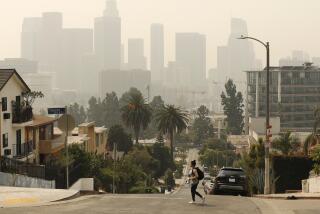Nuclear Plant Radiation Exposure Limits Tightened
- Share via
WASHINGTON — The government Thursday tightened its radiation exposure limits for workers in nuclear power plants and people living near them for the first time in 30 years.
In taking the action, the Nuclear Regulatory Commission said the lower limits would help ensure “a substantial increase in the overall protection of the public health and safety.”
For the public, the limits are being tightened fivefold, reflecting concern among many scientists and physicians that leukemia and other cancers often can result from even low levels of radiation.
Public exposure is to be reduced to 0.1 rem per year from the previous limit of 0.5 rems. A rem is the standard unit of measurement for radiation.
By comparison, the average passenger on a round-trip coast-to-coast airplane trip absorbs 5 millirems (.005 rems), and a patient who is given a chest X-ray receives 6 millirems of radiation, officials said.
Plant workers will be allowed higher dosages than the public, up to a combined exposure inside and outside the workplace of 5 rems. The commission said that plant employees are not now at risk but that the new guidelines will add an extra margin of safety.
Studies show that actual exposures of employees remain very low, with 97% of all workers having absorbed less than 2 rems in 1987, the last year for which figures are available, officials said.
It is much easier for the commission to monitor plant workers than the public, since employees must wear devices to measure the radiation they receive. To ensure compliance with radiation levels affecting the public, the government will rely on regular plant inspections and on air samples and other readings taken around the facilities.
Authorities said the revisions will impose an added cost of about $170 million on the industry. They said its principal impact will be at uranium processing plants, many of which may have to take major steps to meet tougher standards on airborne uranium.
Anti-nuclear groups charged that the new rules contain a loophole allowing the industry to seek NRC approval for “planned special exposures” above the newly established occupational limit. Such an exemption would risk higher dosages for workers, if not the public, they said.
More to Read
Sign up for Essential California
The most important California stories and recommendations in your inbox every morning.
You may occasionally receive promotional content from the Los Angeles Times.













